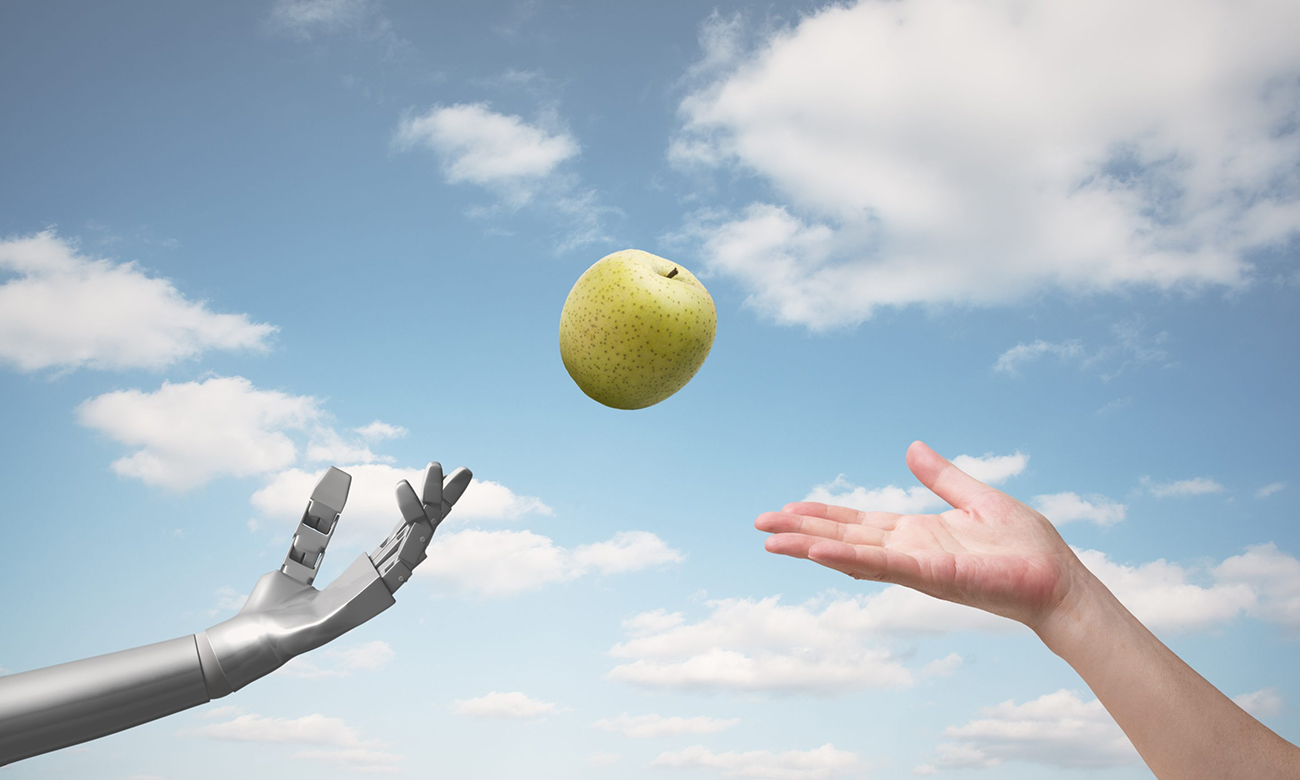
食品制造商很快就能利用人工智能和真实世界的患者数据集来优化其产品的营养,造福糖尿病患者和糖尿病前期患者,甚至广大普通人群。
美国疾病控制和预防中心(U.S. Centers for Disease Control and Prevention)的数据显示,近 40% 的美国人是糖尿病前期患者,他们升高的血糖水平可能对健康造成损害,但还不足以被正式诊断为糖尿病。就糖尿病本身而言,美国人口中略高于十分之一的人患有糖尿病。
总体而言,大约半数的美国人是糖尿病或糖尿病前期患者。
January AI 公司首席执行官努欣·哈希米(Noosheen Hashemi)告诉《财富》杂志:“总的来说,我们国家的人口病得不轻。”
她的公司销售一款集成了连续血糖监测仪(CGM)、智能手表或智能戒指等活动追踪器、以及人工智能驱动的APP的系统,能够预测 3200 多万种食物对每位不同用户的血糖影响,并在用户食用之前向他们推荐更健康的替代品。
January 的工作原理是创建用户生理数字模型,基于用户的血糖水平对脂肪、蛋白质和碳水化合物等宏量营养素组合产生的反应数据,预测用户的身体对不同食物将有怎样的反应。
这些真人的“数字双胞胎 ”采用匿名方式,分为三个组群:糖尿病患者、糖尿病前期患者和非糖尿病患者。然后,该公司从食品公司获取食谱或食品,分析这些食品对组群中血糖水平的影响,从而帮助食品公司生产出更健康的产品。
公司的新合作伙伴包括雀巢公司(Nestlé)。
哈希米说,这项技术“使食品公司的产品开发过程更加智能化”。她补充说,"更重要的是,在进行任何昂贵的实验室工作之前",这项技术能让食品公司去虚拟地创造产品,完善产品。
食物对健康的重要作用
食物是血糖管理的最大影响因素。哈希米说,食物对于某些疾病“扮演了重要角色”,可能会导致肥胖症、心脏病甚至癌症。
哈希米说,公司的消费者系统可以帮助人们更早地发现糖尿病和糖尿病前期,还能帮助患者采取可以逆转病情的生活方式,防止出现失明、截肢、心脏病发作、中风和肾脏问题等潜在的破坏性并发症。
“大概有 3000 万人做过基因测试,”她指的是美国消费者直接购买的基因祖先测试。"如果有 3000 万人尝试使用 CGM会怎样?许多糖尿病前期患者和糖尿病患者都不知道自己患有糖尿病,因此无法进行干预,这意味着许多主要器官会持续受损。据估计,850 万美国人患有糖尿病,其中 20% 对自己患有糖尿病并不知情,而高达 90% 的糖尿病前期患者不清楚自己的病情。
虽然美国糖尿病协会(American Diabetes Associations)建议所有 45 岁及以上的成年人和有重要风险因素的年轻人每年进行一次糖尿病筛查,但各医疗机构的指导方针不尽相同,导致患者漏诊。
哈希米说,未确诊者 “在不知不觉中慢慢走向潜在疾病,人们依赖标准护理来保护自己免受疾病侵袭,但他们发现时已经为时太晚,”并发症已经出现。
哈希米说,CGM 为消费者提供了将健康掌握在自己手中的机会,她将这一过程称为“拦截你的不健康食物”。
她说,“我们认为,人们只需花很少的钱,就能知道自己是否属于那种血糖过高的人,”她指的是那些进食后血糖水平异常飙升,达到不健康水平的糖尿病或糖尿病前期患者。
“他们可以很容易地改变饮食选择,比如不要在冰沙里放进一整根香蕉。”
惠及普罗大众
当January AI的消费者系统内置人工智能功能发现用户已经食用了不健康的食物,它会推荐低血糖替代品,还会提示用户何时开始或停止间歇性禁食,并在最适合降低血糖峰值的时间提醒他们锻炼。
这套系统配备有一个14天传感器,定价288美元——这是许多人无法承受的价格。
哈希米说,人工智能饮食计划和定制的运动推送警报等附加功能非常优秀,但通过研究饮食计划来发现葡萄糖趋势并进行自我干预并非必要。
她鼓励那些最近没有接受糖尿病或糖尿病前期筛查的人,以及负担不起January AI系统的人,要求医生给他们处方更便宜的CGM传感器。虽然保险可能无法支付费用——市场上最便宜的品牌约为80美元——即使是一个14天的传感器提供的数据也可能改变他们的生活,甚至挽救生命。
但并不是每个人都能负担得起。这就是为什么哈希米很高兴与大牌食品制造商合作,让每个人的日常膳食更健康。这样,January AI的技术就可以使普罗大众受益——即使只是间接受益。
“我们对食品系统的结构性变化感到非常兴奋——这对我们来说是巨大的改变,”她说。“它可以让每个人都变得更健康,这就是我们为之痴迷的地方。“(财富中文网)
食品制造商很快就能利用人工智能和真实世界的患者数据集来优化其产品的营养,造福糖尿病患者和糖尿病前期患者,甚至广大普通人群。
美国疾病控制和预防中心(U.S. Centers for Disease Control and Prevention)的数据显示,近 40% 的美国人是糖尿病前期患者,他们升高的血糖水平可能对健康造成损害,但还不足以被正式诊断为糖尿病。就糖尿病本身而言,美国人口中略高于十分之一的人患有糖尿病。
总体而言,大约半数的美国人是糖尿病或糖尿病前期患者。
January AI 公司首席执行官努欣·哈希米(Noosheen Hashemi)告诉《财富》杂志:“总的来说,我们国家的人口病得不轻。”
她的公司销售一款集成了连续血糖监测仪(CGM)、智能手表或智能戒指等活动追踪器、以及人工智能驱动的APP的系统,能够预测 3200 多万种食物对每位不同用户的血糖影响,并在用户食用之前向他们推荐更健康的替代品。
January 的工作原理是创建用户生理数字模型,基于用户的血糖水平对脂肪、蛋白质和碳水化合物等宏量营养素组合产生的反应数据,预测用户的身体对不同食物将有怎样的反应。
这些真人的“数字双胞胎 ”采用匿名方式,分为三个组群:糖尿病患者、糖尿病前期患者和非糖尿病患者。然后,该公司从食品公司获取食谱或食品,分析这些食品对组群中血糖水平的影响,从而帮助食品公司生产出更健康的产品。
公司的新合作伙伴包括雀巢公司(Nestlé)。
哈希米说,这项技术“使食品公司的产品开发过程更加智能化”。她补充说,"更重要的是,在进行任何昂贵的实验室工作之前",这项技术能让食品公司去虚拟地创造产品,完善产品。
食物对健康的重要作用
食物是血糖管理的最大影响因素。哈希米说,食物对于某些疾病“扮演了重要角色”,可能会导致肥胖症、心脏病甚至癌症。
哈希米说,公司的消费者系统可以帮助人们更早地发现糖尿病和糖尿病前期,还能帮助患者采取可以逆转病情的生活方式,防止出现失明、截肢、心脏病发作、中风和肾脏问题等潜在的破坏性并发症。
“大概有 3000 万人做过基因测试,”她指的是美国消费者直接购买的基因祖先测试。"如果有 3000 万人尝试使用 CGM会怎样?许多糖尿病前期患者和糖尿病患者都不知道自己患有糖尿病,因此无法进行干预,这意味着许多主要器官会持续受损。据估计,850 万美国人患有糖尿病,其中 20% 对自己患有糖尿病并不知情,而高达 90% 的糖尿病前期患者不清楚自己的病情。
虽然美国糖尿病协会(American Diabetes Associations)建议所有 45 岁及以上的成年人和有重要风险因素的年轻人每年进行一次糖尿病筛查,但各医疗机构的指导方针不尽相同,导致患者漏诊。
哈希米说,未确诊者 “在不知不觉中慢慢走向潜在疾病,人们依赖标准护理来保护自己免受疾病侵袭,但他们发现时已经为时太晚,”并发症已经出现。
哈希米说,CGM 为消费者提供了将健康掌握在自己手中的机会,她将这一过程称为“拦截你的不健康食物”。
她说,“我们认为,人们只需花很少的钱,就能知道自己是否属于那种血糖过高的人,”她指的是那些进食后血糖水平异常飙升,达到不健康水平的糖尿病或糖尿病前期患者。
“他们可以很容易地改变饮食选择,比如不要在冰沙里放进一整根香蕉。”
惠及普罗大众
当January AI的消费者系统内置人工智能功能发现用户已经食用了不健康的食物,它会推荐低血糖替代品,还会提示用户何时开始或停止间歇性禁食,并在最适合降低血糖峰值的时间提醒他们锻炼。
这套系统配备有一个14天传感器,定价288美元——这是许多人无法承受的价格。
哈希米说,人工智能饮食计划和定制的运动推送警报等附加功能非常优秀,但通过研究饮食计划来发现葡萄糖趋势并进行自我干预并非必要。
她鼓励那些最近没有接受糖尿病或糖尿病前期筛查的人,以及负担不起January AI系统的人,要求医生给他们处方更便宜的CGM传感器。虽然保险可能无法支付费用——市场上最便宜的品牌约为80美元——即使是一个14天的传感器提供的数据也可能改变他们的生活,甚至挽救生命。
但并不是每个人都能负担得起。这就是为什么哈希米很高兴与大牌食品制造商合作,让每个人的日常膳食更健康。这样,January AI的技术就可以使普罗大众受益——即使只是间接受益。
“我们对食品系统的结构性变化感到非常兴奋——这对我们来说是巨大的改变,”她说。“它可以让每个人都变得更健康,这就是我们为之痴迷的地方。“(财富中文网)
Food manufacturers will soon be able to use AI and real-world patient data sets to nutritionally optimize their food—for diabetics, pre-diabetics, and the general population.
Nearly 40% of Americans have pre-diabetes, according to the U.S. Centers for Disease Control and Prevention—a condition in which blood glucose levels are elevated and can cause damage, but aren’t high enough to warrant an official diagnosis of diabetes. When it comes to diabetes itself, slightly more than a tenth of the U.S. population has the condition.
All told, roughly half of the U.S. population has one of the two.
“In general, we are just a very sick population of people,” Noosheen Hashemi, CEO of January AI, tells Fortune.
Her company markets a system that uses a continuous glucose monitor (CGM), an activity tracker like a smart watch or ring, and an AI-powered app. It can predict the blood glucose impact of more than 32 million foods on each user and suggest healthier alternatives—before they’re consumed.
January works by creating digital models of user physiology, using empirical evidence of how their glucose levels reacts to combinations of macronutrients—like fat, protein, and carbohydrates—to predict responses to different foods.
These “digital twins” of real people are anonymized and divided into three cohorts: diabetic, pre-diabetic, and non-diabetic. The company then takes recipes or foods from food companies and returns an analysis of the food’s impact on glucose levels in the cohorts, in a bid to help food companies create healthier products.
Among the company’s new partners: Nestlé.
The technology “gives food companies an additional level of intelligence beyond what they already employ in their product development process,” Hashemi says. What’s more, it will allow them to create and refine products virtually, “before any costly lab work is undertaken,” she adds.
Food’s ‘outsized role’ in disease
Food is the most impactful factor in glucose management. It plays “an outsized role in disease” in general, according to Hashemi, potentially influencing the development of obesity, heart disease, and even cancer.
The company’s consumer system could help detect diabetes and pre-diabetes earlier, Hashemi says. And it could help patients make lifestyle choices that may reverse the condition—and prevent the development of potentially devastating complications like blindness, amputation, heart attack, stroke, and kidney problems.
“Something like 30 million people took a genetic test,” she says, referring to U.S. purchases of direct-to-consumer genetic ancestry tests. “What if 30 million people tried a CGM one time?”
Many pre-diabetics and diabetics are unaware they have the condition and, thus, can’t intervene, meaning continuous damage to many major organs. Of the estimated 8.5 million Americans who have diabetes, 20% don’t know. And a whopping 90% of pre-diabetics are unaware of their condition.
While the American Diabetes Associations recommends that all adults 45 and older, and younger people with major risk factors, are screened annually for the conditions, guidelines vary by medical organizations, and patients slip through the cracks.
The undiagnosed are “slowly marching toward potential disease without knowing it,” Hashemi says. “People are depending on the standard of care to protect them from disease, but they’re just finding out too late,” by the time complications have developed.
A CGM, Hashemi says, offers consumers the chance to take their health into their own hands—a process she calls “hacking your spiking food.”
“We thought people could inexpensively just find out if they’re one of those spikers,” she says, referring to people with diabetes or pre-diabetes whose blood glucose levels spike unusually high, to unhealthy levels, after eating.
“They could easily update their diet choices, like not putting an entire banana inside their smoothie.”
Benefitting the masses
When the AI built into January AI’s consumer system spots trouble foods a user has eaten, it will recommend lower glycemic alternatives. It also prompts users to start and stop intermittent fasting and to exercise at times that are optimal for reducing blood glucose spikes.
But the system, with one two-week sensor, costs $288—a price inaccessible to many.
Extras like AI diet planning and customized exercise push alerts are ideal, but not necessary to spot concerning glucose trends and intervene oneself, with research and diet planning, Hashemi says.
She encourages those who haven’t been screened for diabetes or pre-diabetes recently and who can’t afford January AI’s system to ask their doctor for a prescription for an inexpensive CGM sensor. While insurance likely won’t cover the cost—around $80 for the cheapest on the market—and the data provided by even one two-week sensor could be life-changing or even life-saving.
But not everyone can afford that, either. That’s why Hashemi is excited about partnering with major food manufacturers to make every-day meals healthier for everyone. That way, January AI’s technology can benefit a mass audience—even if only indirectly.
“We’re really excited about structural change to the food system—that, for us, is huge,” she says. “It could make everyone less sick, and that’s what we’re kind of obsessed with.”






